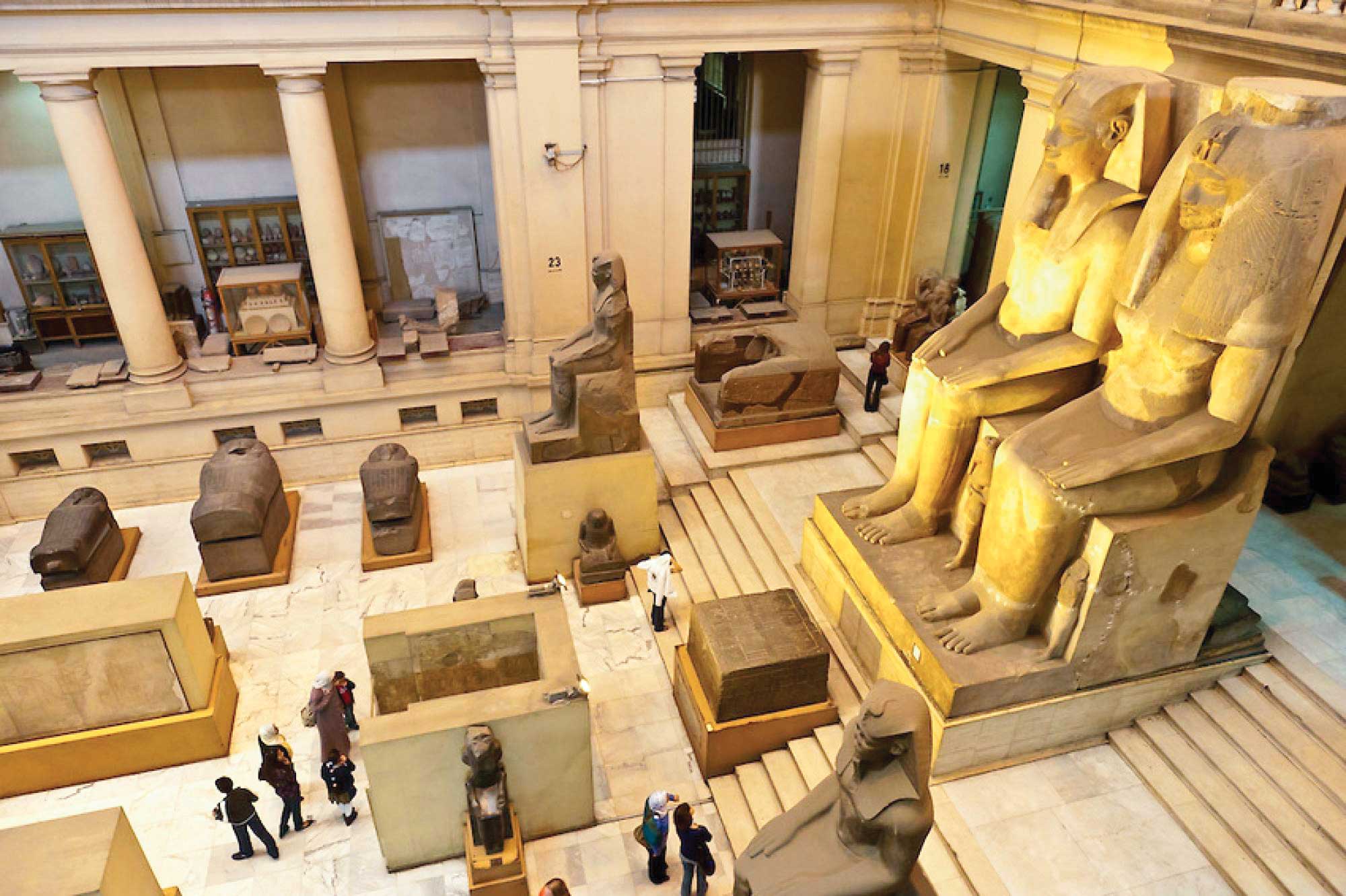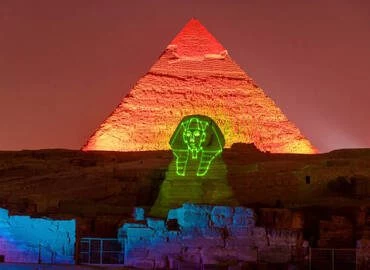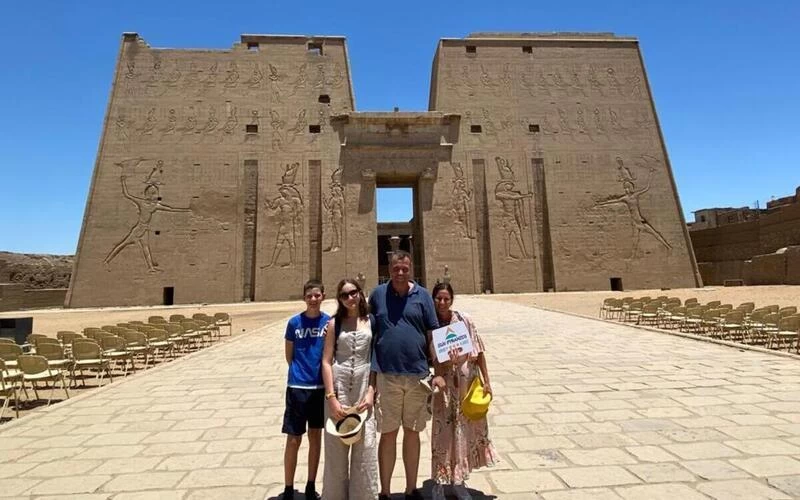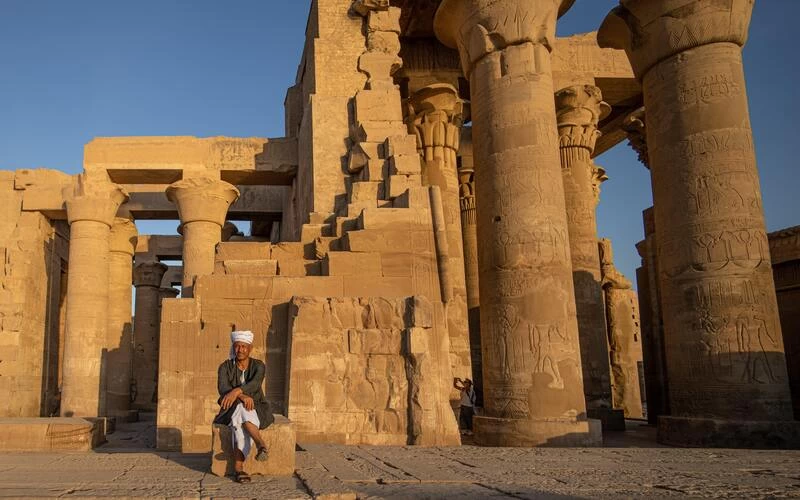10 Famous Ancient Egyptian Symbols and Their Meanings
Table of Content
What Did Ancient Egyptian Symbols Mean
The Ankh - Symbol of Life
The Djed - Symbol of Stability
The Tyet - Symbol of Feminism
Wadjet (The Eye of Horus) - Symbol of Protection & Healing
The Scarab - Symbol of Transformation
The Udjat Eye (The Eye of Ra) - Symbol of Protection & Power
Lotus Symbol - Symbol of Rebirth & Purity
The Shen - Symbol of Royalty & Symmetry
Hekha and Nekhakha (Crook & Flail) - Symbol of Kingship
Uranus - Symbol of Royalty
10 Famous Ancient Egyptian Symbols and Their Meanings
Ancient Egypt is renowned for its rich tapestry of symbols, each carrying profound meanings and representing various aspects of their culture and beliefs. These Egyptian symbols and meanings were a fusion of their ideas and existence, creatively shaped to reflect their desires and experiences. Each symbol had a unique shape and meaning derived from the Egyptians' daily lives and was integral to their understanding of concepts such as life, death, birth, regeneration, power, love, protection, and healing.
Egypt Tours can be your magical guide across the incredible destinations of Egypt like Cairo, Alexandria, Luxor, and Aswan, where the ancient knowledge of Egyptian civilization is found. Ancient Egyptian symbols, depicted as hieroglyphs and known as "The Words of Gods" were used to document the most important events, spiritual beliefs, and culture in ancient Egyptian history.
In this blog post, Sun Pyramids Tours will delve into the meanings behind 10 of the most significant ancient Egyptian symbols, revealing the fascinating insights they offer into this ancient civilization.
What Did Ancient Egyptian Symbols Mean?
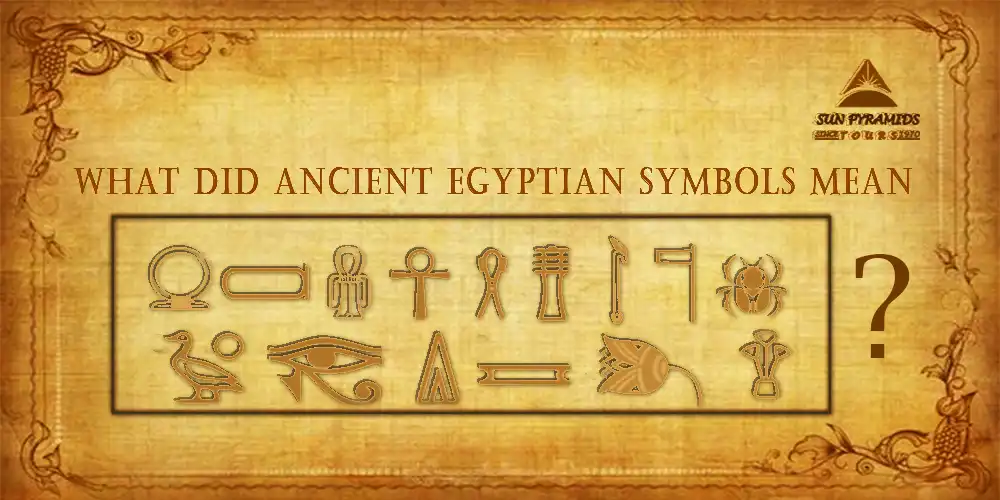
Ancient Egyptian Symbols were not just artistic expressions but were deeply involved with the spiritual and practical aspects of life. They were inscribed in tombs, temples, and monuments, engraved on jewelry, and painted in manuscripts, serving as constant reminders of the divine presence and cosmic order.
From the symbol of the Ankh to the mystical Eye of Horus, these symbols were essential in their daily life, religion, and comprehension of the universe. They were often referred to as the words of the gods, playing a crucial role in passing down the culture and beliefs of ancient Egypt from one generation to the next. Each symbol reflected the power and wisdom of the gods, illustrating a wide array of ideas, including truth, faith, fertility, wealth, luck, happiness, lust, weakness, hatred, peace, and more.
The Ankh - Symbol of Life
The Ankh is one of the most famous and widely used ancient Egyptian symbols. It represents life and immortality, embodying the concept of eternal life and divine protection. The Ankh is a cross with a looped top, resembling a key, symbolizing the spirit of Ra, the sun god, and the endless cycle of life. It represents eternal life, the morning sun, the life-giving power of water, clairvoyance, and the union of opposites such as earth and heaven, and male and female (Isis and Osiris).
First appearing during the Early Dynastic Period (3150-2613 BCE), the Ankh became a powerful symbol of eternal life by the Old Kingdom (2613-2181 BCE), known as Neb-Ankh. The symbol is closely associated with the Knot of the Goddess Isis and her influential cult, representing the bond that holds all life together. The Ankh is frequently depicted in the hands of Pharaohs & the ancient Egyptian gods and goddesses and deities in paintings, temple walls, and tombs, signifying their divine power to bestow life and offer protection.
Also known as crux ansata by Coptic Christians, the Ankh symbolizes life and immortality. It appears in various artworks as the key to existence, believed to provide divine protection and open the door to the afterlife. The Ankh embodies joy and balance, representing the balance between masculinity and femininity. Often referred to as the key of the Nile, it signifies the eternal union of heaven and earth.
The Ankh is frequently seen with the Djed and the Was symbols, representing stability and power. As a symbol of life, protection, faith, energy, transformation, light, and fertility, the Ankh also symbolizes sexual union and fertility due to its connection to the goddess Isis. It is a clear example of the ancient Egyptian understanding of immortality, future life, reproduction, and the cycle of life.
The Djed - Symbol of Stability
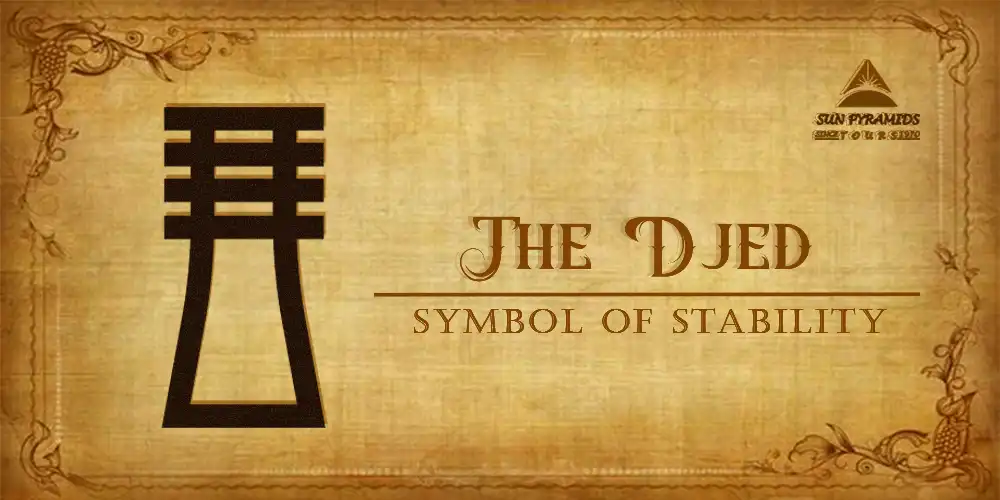
The Djed, known as "The Backbone of Osiris," symbolizes strength and stability. Associated with Osiris, the god of the underworld, and Ptah, the god of creation, the Djed represents resurrection and eternal life. Ancient Egyptians believed the Djed pillar combined four pillars holding the four corners of the earth, emphasizing balance and hope in the afterlife provided by the great gods and goddesses of ancient Egypt.
The Djed pillar featured prominently in the Old Kingdom of Egypt (2613-2181 BCE) on many temples, in various versions of the Book of the Dead, and as an amulet. It was often depicted at the bottom of coffins, aligning with the backbone of the deceased to help the soul stand up and walk into the afterlife. This symbol signifies the grains rising from the earth, as well as the soul's journey from the body to the afterlife.
In ancient Egyptian rituals, the raising of the Djed pillar was a significant event, symbolizing the soul's ascent to the afterlife and the continuation of life after death. In the Book of the Dead, the Djed directed the soul to leave the body and transition to the afterlife, reinforcing its importance in spiritual guidance.
The Djed pillar embodies various concepts such as fertility, resurrection, stability in life and the afterlife, and the enduring presence of the gods. It was a powerful symbol for the pharaohs, representing fertility, eternal life, triumph, balance, rebirth, regeneration, immutability, permanence, and abundant harvests. The Djed remains one of the most significant ancient Egyptian symbols, illustrating the civilization's deep connection to stability and the afterlife.
The Tyet - Symbol of Feminism
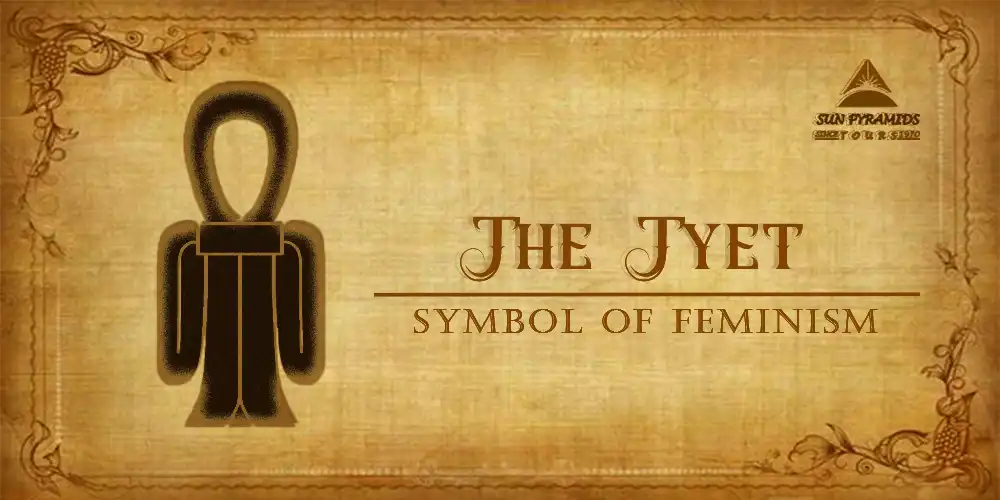
The Tyet, also known as the Knot of Isis or the Blood of Isis, is a significant ancient Egyptian symbol. Resembling the Ankh but with arms curving downward, the Tyet dates back to the Old Kingdom (2613 – 2181 BCE) and represents the female genitalia, embodying feminine power and protection. Often crafted as a funerary amulet from red stone or glass, it was associated with several goddesses, especially Isis, in her role as the universal mother.
The Tyet symbolized the female reproductive organs and the protective and nurturing role of women in society. It was frequently combined with the Djed pillar to represent the union of feminine and masculine powers. This combination symbolized the concepts of eternal life and resurrection, offering comprehensive protection and security from both Isis and Osiris.
In the New Kingdom of Egypt (1570 – 1050 BCE), when Egypt reached its zenith and the cult of Isis peaked, the Tyet became particularly prominent. The symbol is also linked to Nephthys, another goddess, with concepts of burial and resurrection. The Tyet represents life, feminine power, security, protection, regeneration, love, blood, and health. Reflecting the cyclical nature of life and death, it also represents the female sanitary cloth during menstruation, emphasizing its connection to the concepts of life and renewal.
The Tyet's enduring significance highlights the profound respect and importance ancient Egyptians placed on feminine power and the protective role of women in their society. This symbol remains a vital part of understanding Egyptian symbols and meanings and their cultural significance.
Wadjet (The Eye of Horus) - Symbol of Protection & Healing
.webp)
The Eye of Horus, or Wadjet, is one of the most powerful ancient Egyptian symbols representing protection, royal power, and good health. Known as "The Eye of Horus" this symbol was used extensively as an amulet, believed to ward off evil and bring strength and vigor to its bearer.
The Eye of Horus symbolized the eye of the falcon god Horus, who was associated with the sky, kingship, and protection. According to mythology, Horus lost his eye during a battle with his uncle Seth. The eye was later restored by the god Thoth, and it came to symbolize healing and restoration. This powerful imagery made the Eye of Horus a symbol of protection, safeguarding individuals from harm and ensuring their well-being.
The symbol was often incorporated into jewelry, carvings, and various artifacts, serving as a protective emblem for both the living and the dead. It was believed to have magical properties, ensuring the wearer's safety and health. The Eye of Horus also played a significant role in funerary practices, placed on mummies to protect the deceased in the afterlife and aid in their resurrection.
The Eye of Horus is intricately connected with the concepts of health, protection, and royal authority. It illustrates the profound belief in divine intervention and the power of the gods to heal and protect. This ancient symbol remains one of the most recognized and revered Egyptian symbols and meanings, highlighting its enduring legacy in Egyptian culture and its significance in the lives of both the ancient Egyptians and those who admire their civilization today.
The Scarab - Symbol of Transformation
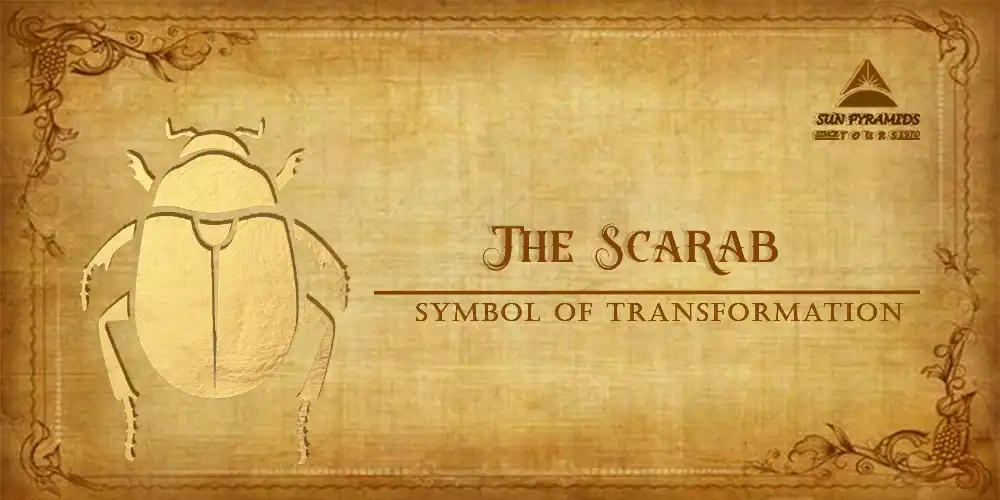
The scarab beetle is one of the most well-known ancient Egyptian symbols, representing creation, rebirth, and transformation. Prominent during the first intermediate period (2181-2040 BCE) until the rise of Christianity, the scarab is often depicted in Egyptian art and iconography. The scarab beetle, a species of the dung beetle, inspired the shape of the scarab amulet due to its unique behavior of rolling dung into a ball and laying its eggs within it. This act symbolized life emerging from nothing, embodying the concepts of transformation, recreation of life, and resurrection.
The scarab was identified with the god Khepri, who was believed to assist Ra by rolling the sun across the sky, much like the beetle rolls its ball of dung. This connection further emphasized the scarab's association with existence, transformation, growth, effectiveness, and divine manifestation. Scarab amulets, commonly made from hardstones such as amethyst, green jasper, and carnelian, were highly valued for their protective and renewing properties.
The scarab hieroglyph was often used in the titles of officials, governmental seals, and other important documents, highlighting its significance in ancient Egyptian culture. As one of the most powerful amulets, the scarab symbolized life, death, good luck, transformation, growth, and creation. It represented the ideals of immortality, metamorphosis, and the eternal cycle of life.
In ancient Egypt, scarab amulets were believed to bring renewal and protection to their bearers. They played a crucial role in both daily life and funerary practices, ensuring safe passage and rebirth in the afterlife. The scarab beetle's enduring legacy as an ancient Egyptian symbol continues to captivate and inspire, embodying the timeless themes of transformation and regeneration.
The Udjat Eye (The Eye of Ra) - Symbol of Protection & Power
.webp)
The Udjat Eye, or the Eye of Ra, symbolizes protection, power, and royal authority. Associated with the sun god Ra, it represents the sun's all-seeing eye and its life-giving and destructive powers.
The Udjat Eye invoked the divine might of Ra to protect the pharaohs. This ancient Egyptian symbol is renowned for its ability to repel negative energy and create harmony.
Originating from various myths, one tale describes Ra sending his eye to find his lost children. During the eye's absence, another eye grew. Upon the return of the original eye with the children, it was used as a weapon by other gods.
In Ra's daily journey across the sky and through the underworld at night, he relied on the eye's power. The myth narrates that Ra's daughter used the eye to punish disobedient humans, but fearing its destructive potential, other gods captured and calmed the eye, returning it to Ra. The Udjat Eye symbolizes not only royal power and authority but also regeneration and peace. While it embodies the sun's destructive force, it was also used to protect buildings and individuals. Ancient Egyptian amulets of the Udjat Eye, often painted dark red, served to ward off evil and promote good health. This powerful symbol, sometimes depicted as a cobra around a solar disk, represents the power of the sun to provide protection and maintain balance and harmony.
Lotus Symbol - Symbol of Rebirth & Purity
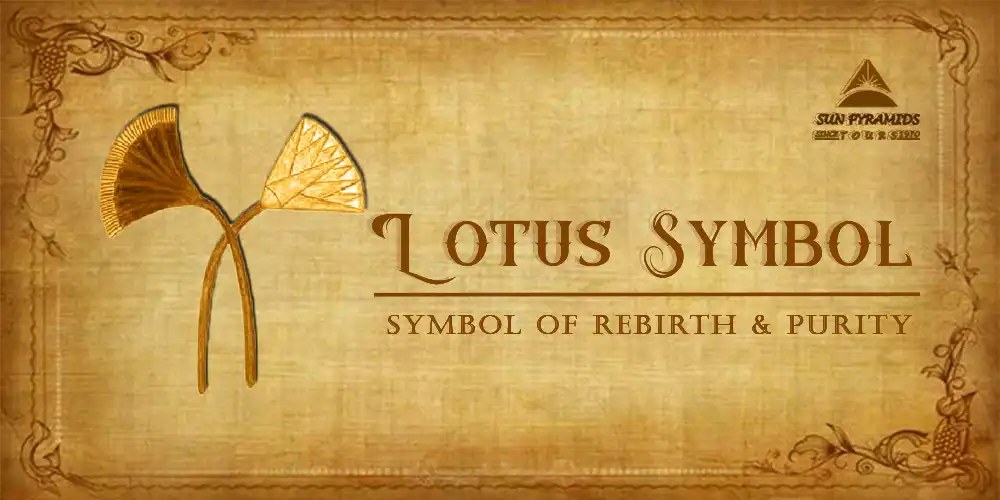
The lotus flower symbolizes rebirth, purity, and enlightenment. Growing in muddy waters, it rises above the surface to bloom with remarkable beauty.
This symbolizes the journey of the soul and the triumph of purity and enlightenment over darkness and impurity. In Egyptian mythology and ancient Egyptian art, the lotus, also known as the "water lily," is a true icon. The flower's daily cycle of closing at night, sinking underwater, and re-emerging in the morning has made it a symbol of the sun, creation, and regeneration.
The Ancient Egyptian Symbol Lotus is linked to Atum-Ra, the sun god, who is said to have emerged from a giant lotus that rose from the waters of Nun at the world's creation.
The symbol was also significant in the cult of Osiris, where it was associated with funeral imagery and the dead's journey into the underworld, symbolizing reincarnation.
The lotus was frequently depicted in art to represent Upper Egypt and was found in honored and sacred places throughout the region. Its imagery adorned the architecture of capitals atop Egyptian pillars, representing the Tree of Life. It was also prevalent in tombs, hieroglyphics, papyrus writings, thrones, and the headdresses of divine pharaohs.
As an emblem of purity, cleanliness, enlightenment, rebirth, and regeneration, the lotus flower reflects the concepts of rebirth and creation, mirroring the flowers' nightly sinking and morning resurrection. Among the various Ancient Egyptian Symbols, the lotus stands out for its profound connection to the cycles of nature and the eternal journey of the soul.
The Shen - Symbol of Royalty & Symmetry
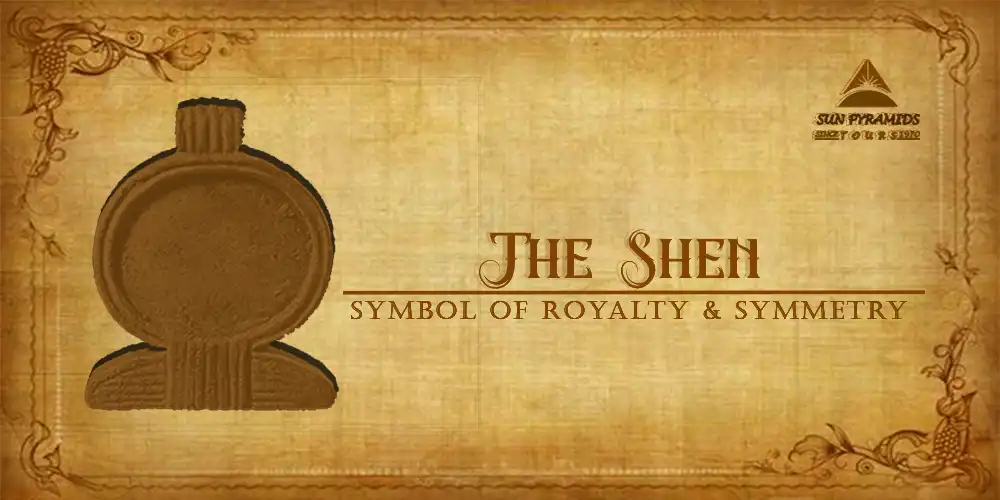
The Shen ring is a loop of rope that has no beginning and no end, symbolizing eternity and protection. It was often used to encircle the names of pharaohs, emphasizing their eternal nature and divine protection.
The Shen ring represents infinity, completeness, and the endless cycle of life. The name "Shen" is derived from an ancient Egyptian word meaning "encircle," and its continuous, unbroken loop made it a powerful symbol of infinity and divine protection.
The Shen was a popular amulet worn by everyone, including kings, and was often compared to the Greek symbol omega, which also signifies infinity. Deities such as Horus and Isis are frequently depicted holding the Shen, underscoring its significance as a symbol of symmetry and perfection.
This Ancient Egyptian Symbol, revered for its representation of eternity and protection, appeared on countless personal objects, temples, and tombs throughout Egypt. Among Ancient Egyptian Symbols, the Shen stands out for its profound image of royal authority and the eternal nature of the divine, reflecting the ancient Egyptians' deep reverence for the endless cycles of life and the universe.
Hekha and Nekhakha (Crook & Flail) - Symbol of Kingship
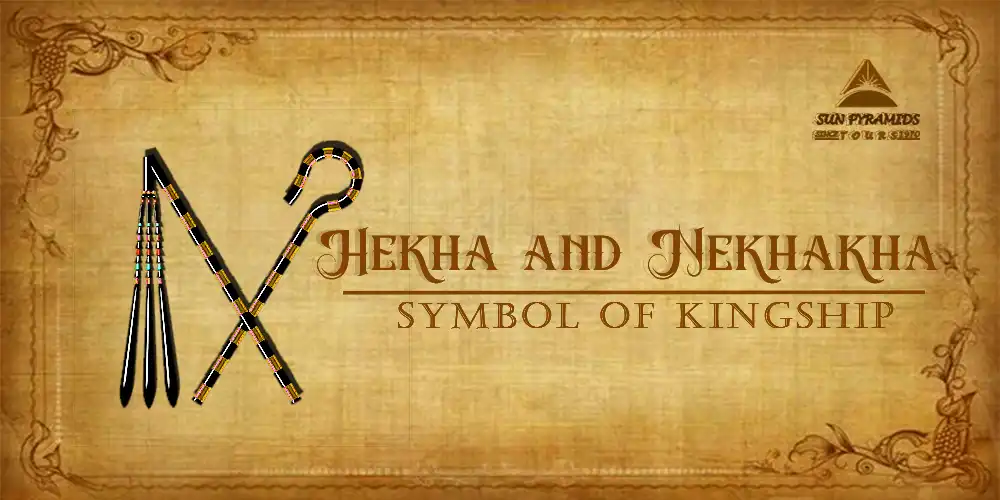
The Crook and Flail, known as Hekha and Nekhakha, are powerful Ancient Egyptian Symbols representing kingship and the absolute authority of the pharaoh. The word "Hekha," a nickname of Osiris, means "to rule," signifying royal power and dominion.
These symbols first appeared during the Early Dynastic Period, around the reign of the first king, Narmer (3150 BCE). Initially, emblems of the god Osiris, the Crook, and Flail were adopted by pharaohs to symbolize their divine right to rule.
The Crook, resembling a shepherd's staff, symbolizes the pharaoh's role as the caretaker and shepherd of his people, reflecting his protective and guiding nature. In contrast, the Flail represents the fertility of the land, emphasizing the pharaoh's duty as the provider of food and sustenance for his subjects. Traditionally made of wood, these items were often crafted from decorated gold for the kings, showcasing their wealth and divine status.
Crook and Flail embody the dual aspects of leadership: the compassionate wisdom of the shepherd and the authoritative control necessary to maintain order within society. As symbols of kingship, power, royalty, fertility, and divine authority, they were commonly depicted in the hands of pharaohs and gods in various artworks and artifacts across the ages. Among Ancient Egyptian Symbols, the Hekha and Nekhakha stand out for their profound representation of the pharaoh's multifaceted role and his connection to the divine.
Uranus - Symbol of Royalty
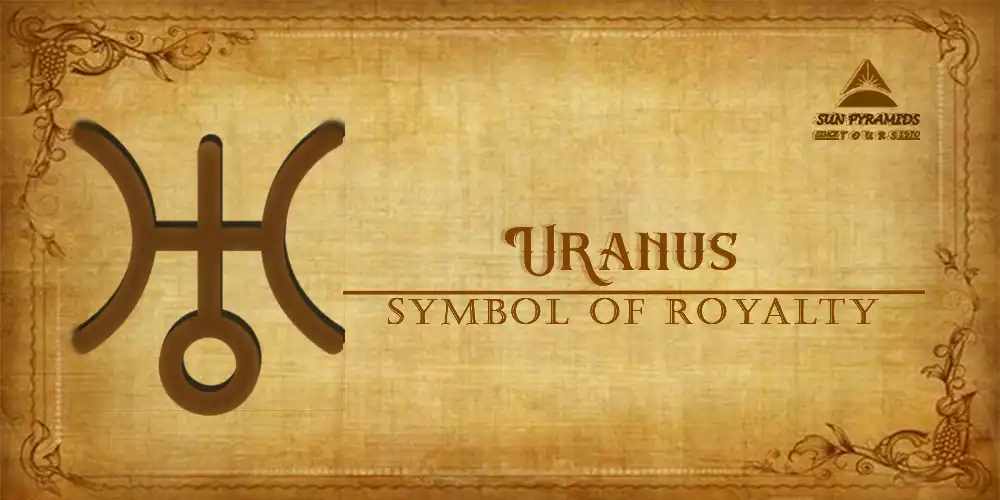
The symbol of Uranus, often depicted as a circle with a central point, represents the heavens and the divine power associated with the sky god.
In Ancient Egyptian mythology, it was a symbol of royalty and divine authority, signifying the pharaoh's connection to the celestial kingdom. This ancient symbol, also known as the Uraeus, embodies sovereignty, royalty, and divine power through its representation of a cobra, the animal associated with the goddess Wadjet.
According to myth, the cobra was granted to the pharaohs by the earth god Geb as a sign of kingship, providing them with magical powers and protection.
The Uraeus was prominently used as a decoration on statues, the top of crowns, and as adornments in jewelry and amulets. It also appeared in hieroglyphs, representing buildings, further emphasizing its sacred and authoritative significance.
Discover the Mystical World of Ancient Egyptian Symbols with Sun Pyramids Tours
Embark on a journey to uncover the mysteries of Ancient Egypt with Sun Pyramids Tours. Our expertly guided tours will take you through the land of the pharaohs, where you can witness these powerful symbols in their original settings. Book your tour today and experience the timeless magic of Egypt's ancient heritage.

Why do I book with Sun Pyramids Tours?
Egypt warmly welcomes visitors with its majestic Nile River, desert landscapes, and the fertile Delta, along with its remarkable and awe-inspiring landmarks. With our Egypt tour packages, you’ll have the chance to uncover the most mesmerizing wonders of the land of the Pharaohs, including the iconic Giza Pyramids, the Great Sphinx, Abu Simbel, the Karnak temples, and so much more. The Nile River is also the perfect setting for one of our Nile cruises, where you can sail through history, admiring the magnificent monuments between Luxor and Aswan. The opportunity is right here for you—don’t miss out, book with us today!
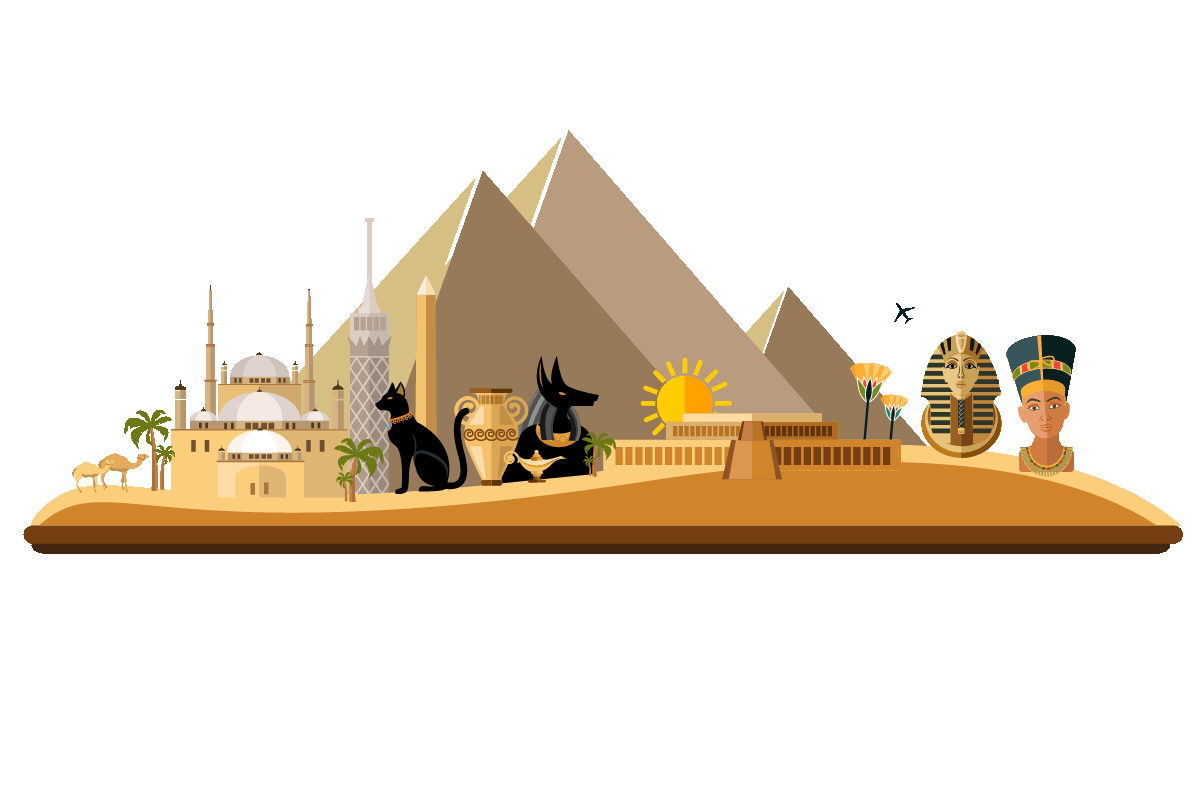
.DvizhAGb.gif)
Plan your next adventure now
Related Tours
Frequently Asked Questions
See more

There are no frequently asked questions :)
Related Blogs
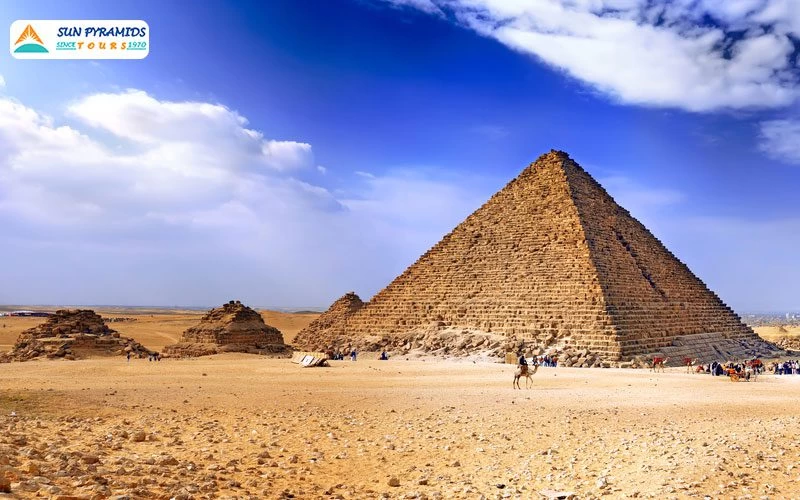
Plan A Trip to Egypt
+1 more
Ultimate Guide: How To Plan A Trip To Egypt

Christmas and New Year in Egypt
+1 more
Christmas and New Year in Egypt

Egypt Hidden Gems
+1 more
Egypt Hidden Gems

Abu Simbel Temple
+1 more
Abu Simbel Temple
Need help to Finding your Trip?
Offers
Make Trip
trips
Home
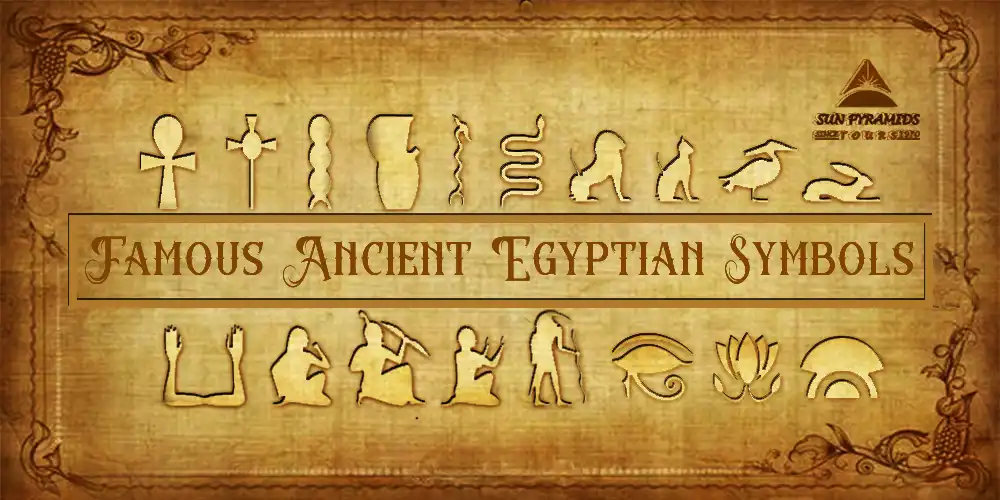
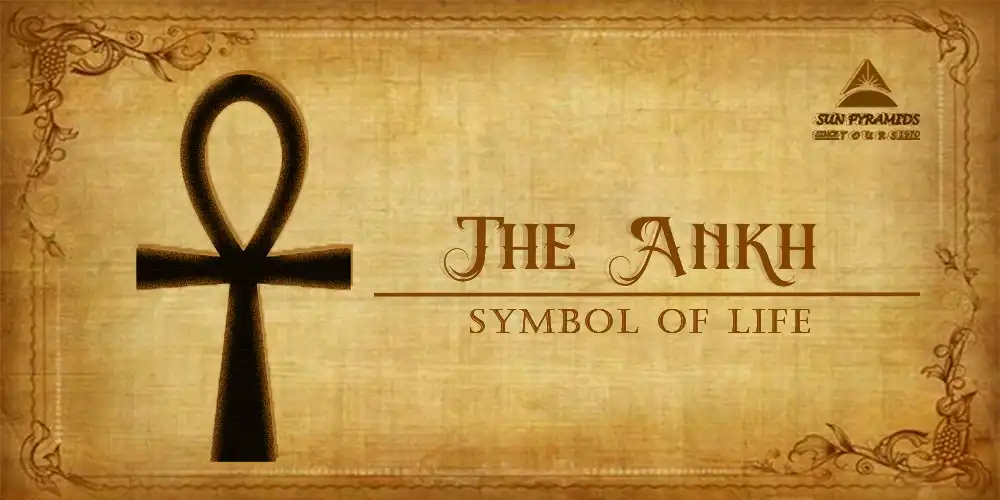
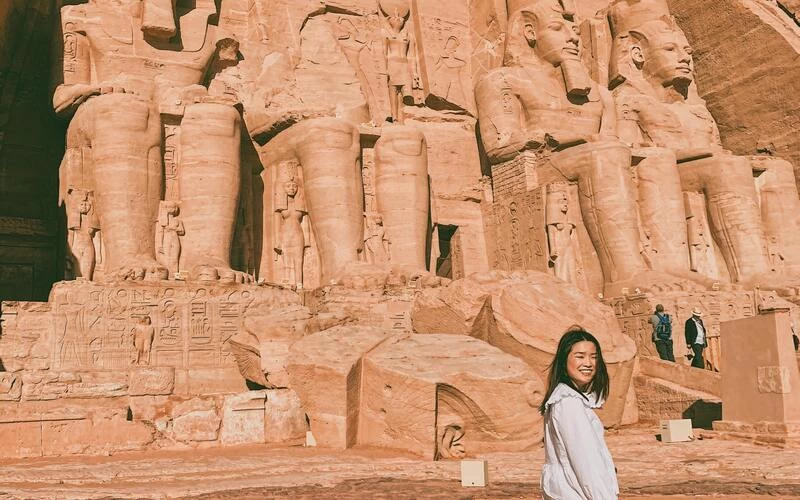

.webp)
.webp)
.webp)
.webp)
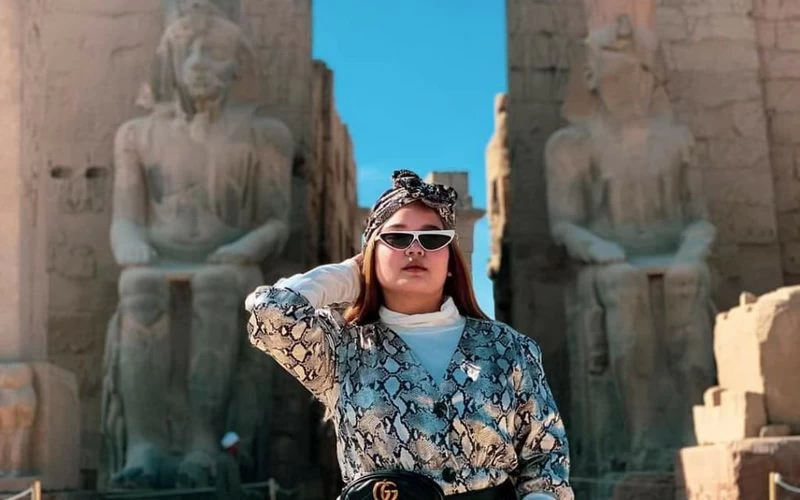
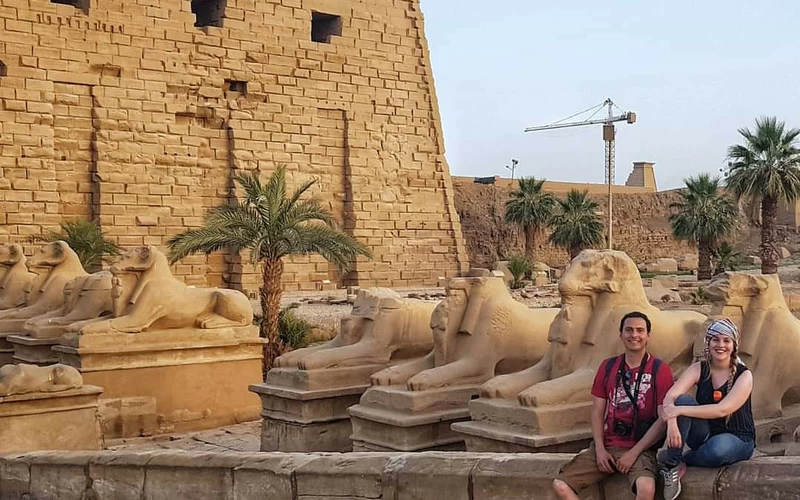

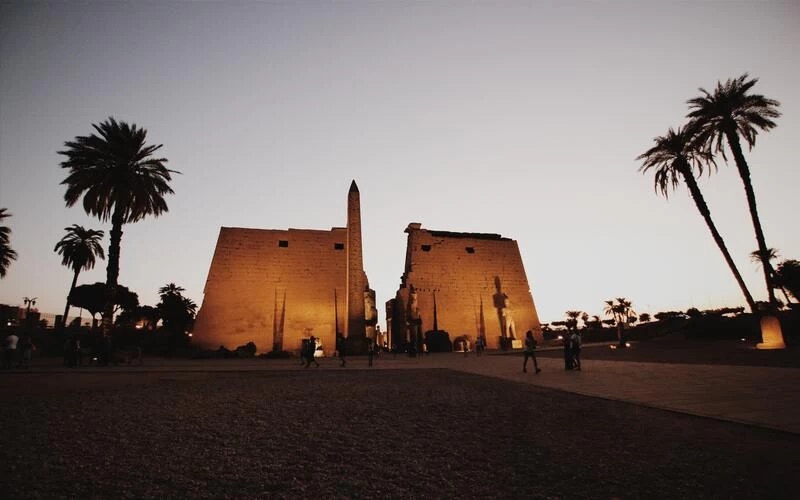
.webp)
.webp)
.jpg)
.jpg)


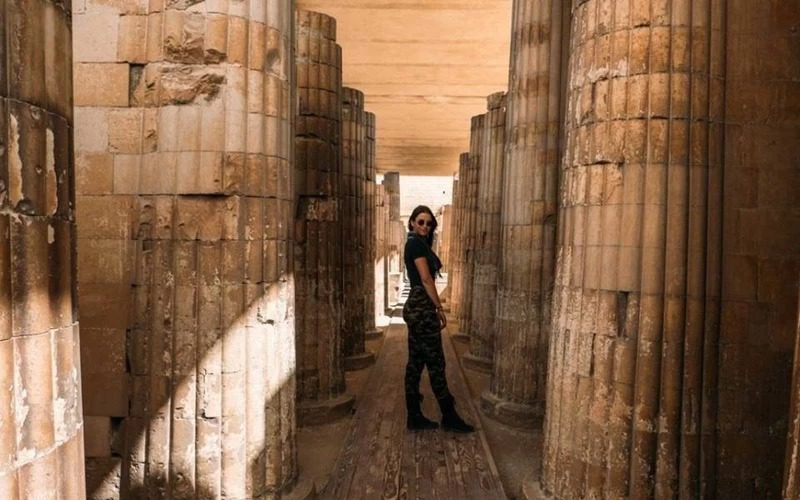
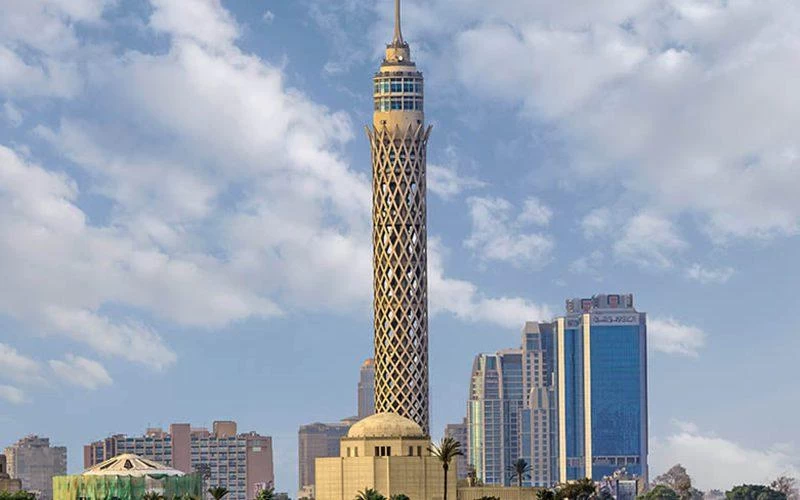
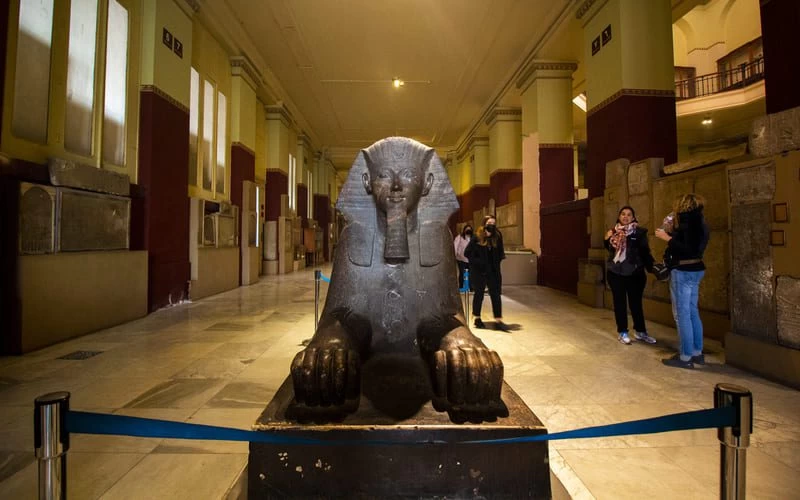
.webp)

.webp)
